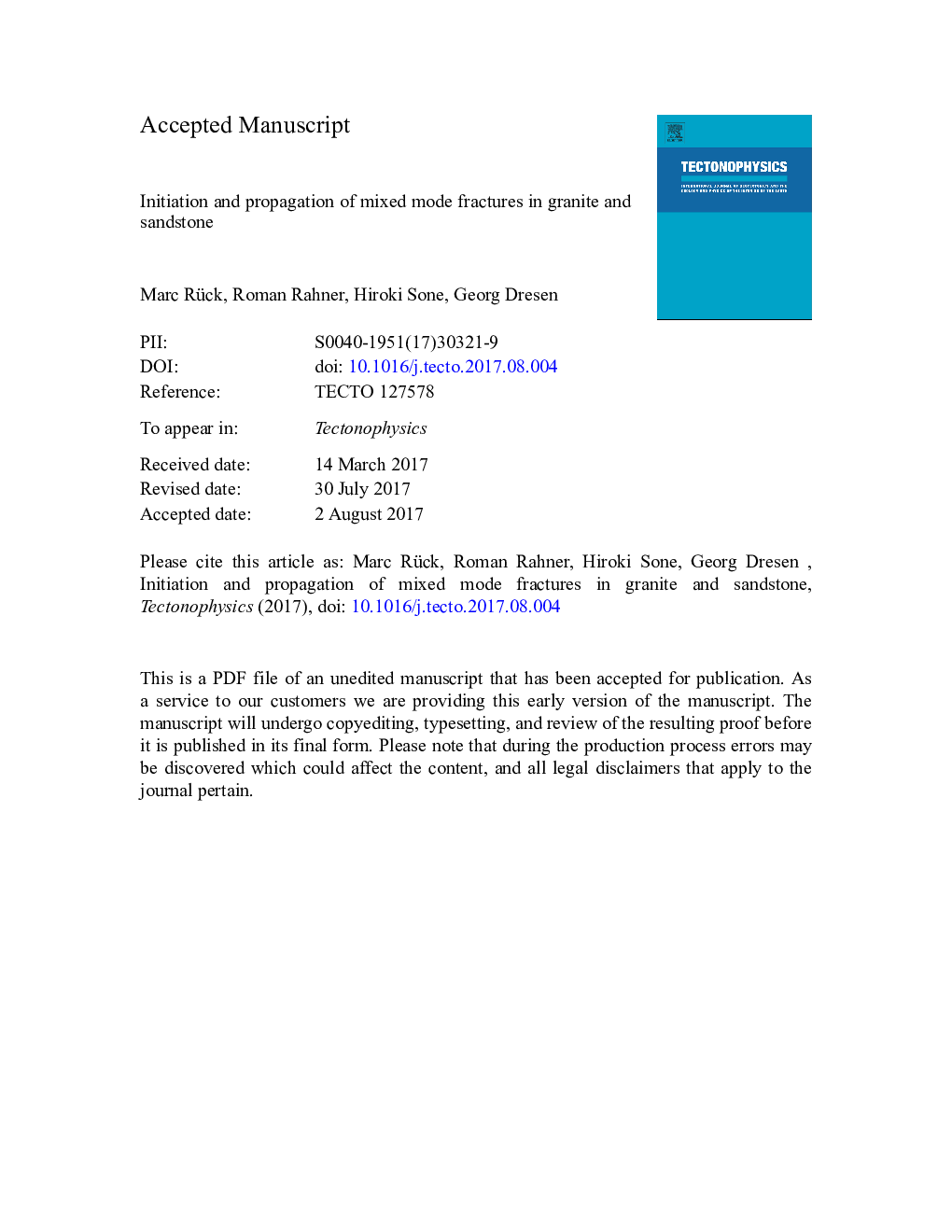| Article ID | Journal | Published Year | Pages | File Type |
|---|---|---|---|---|
| 5781473 | Tectonophysics | 2017 | 46 Pages |
Abstract
We investigate mixed mode fracture initiation and propagation in experimentally deformed granite and sandstone. We performed a series of asymmetric loading tests to induce fractures in cylindrical specimens at confining pressures up to 20Â MPa. Loading was controlled using acoustic emission (AE) feedback control, which allows studying quasi-static fracture propagation for several hours. Location of acoustic emissions reveals distinct differences in spatial-temporal fracture evolution between granite and sandstone samples. Before reaching peak stress in experiments performed on granite, axial fractures initiate first at the edge of the indenter and then propagate through the entire sample. Secondary inclined fractures develop during softening of the sample. In sandstone, inclined shear fractures nucleate at peak stress and propagate through the specimen. AE source type analysis shows complex fracturing in both materials with pore collapse contributing significantly to fracture growth in sandstone samples. We compare the experimental results with numerical models to analyze stress distribution and energy release rate per unit crack surface area in the samples at different stages during fracture growth. We thereby show that for both rock types the energy release rate increases approximately linearly during fracture propagation. The study illuminates how different material properties modify fracture initiation direction under similar loading conditions.
Related Topics
Physical Sciences and Engineering
Earth and Planetary Sciences
Earth-Surface Processes
Authors
Marc Rück, Roman Rahner, Hiroki Sone, Georg Dresen,
